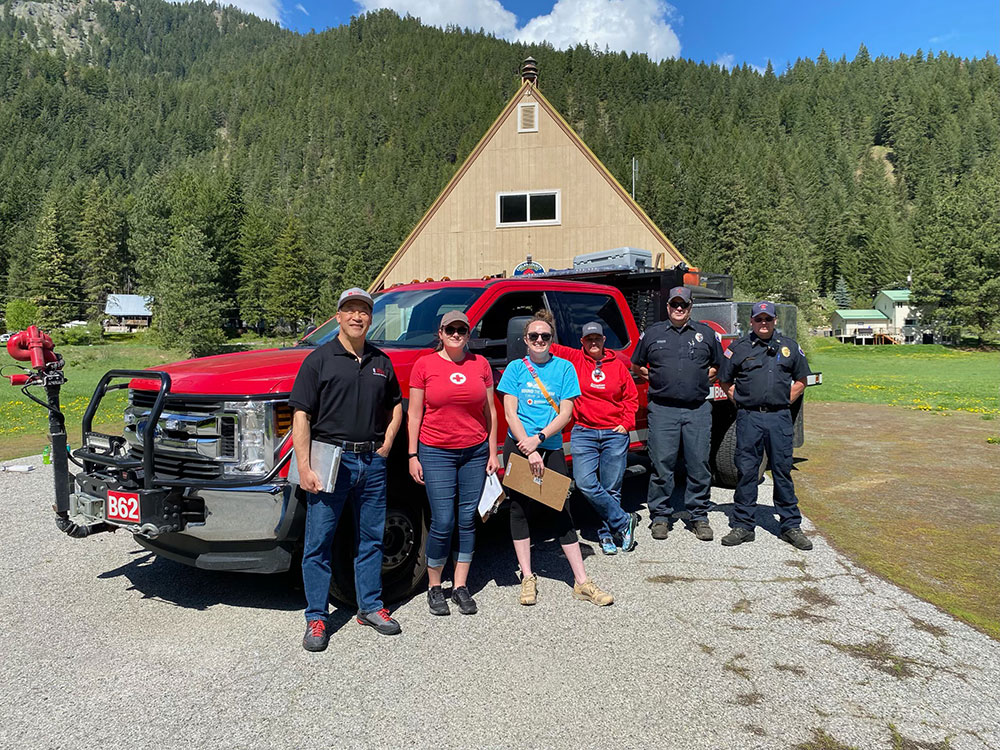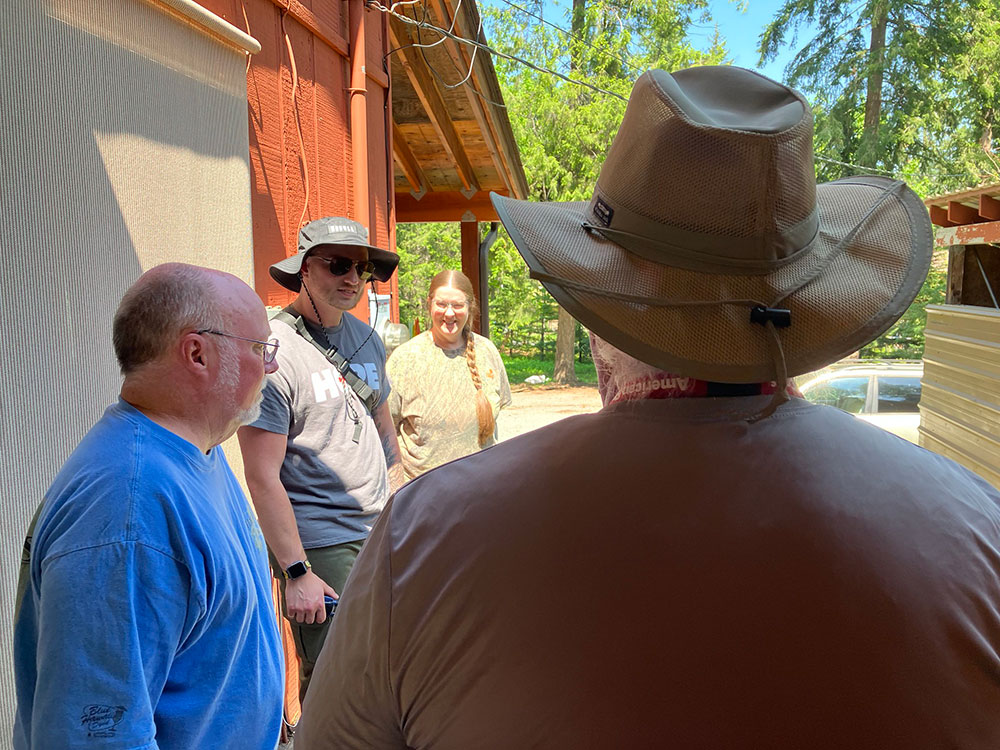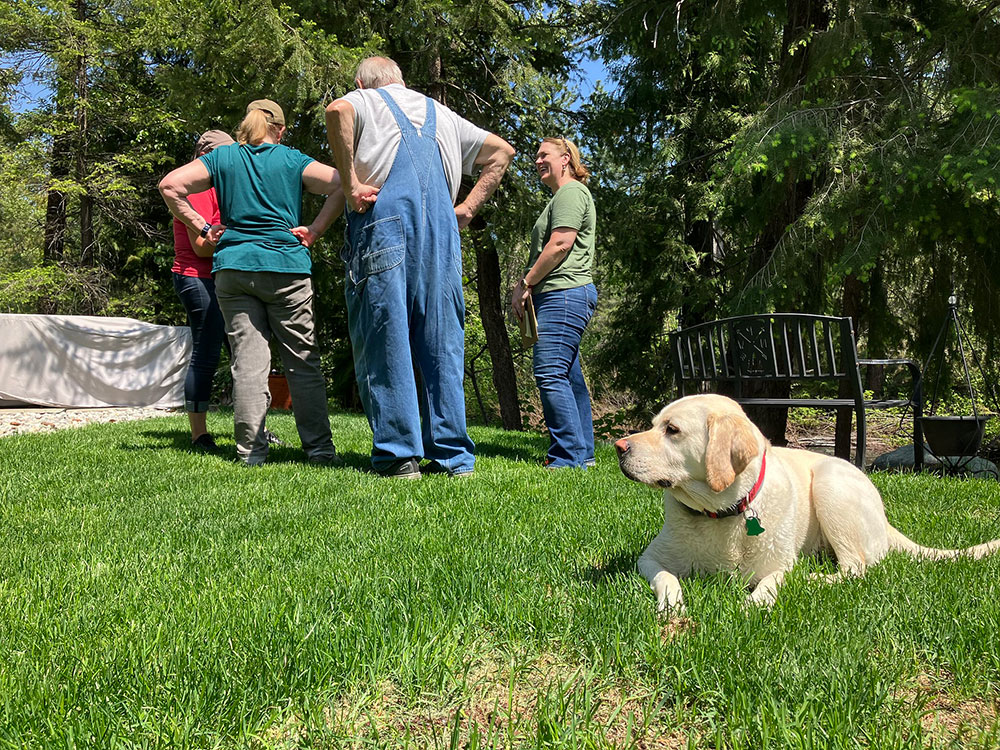


By: Gordon Williams, American Red Cross Volunteer
If you feel overwhelmed trying to prepare and defend your home against the ravages of wildfire, you don’t have to do it on your own. Help is available from the Washington State Department of Natural Resources (DNR) and from the Northwest Region of the American Red Cross.
Both can schedule wildfire assessments free of charge that will bring experts to your home to help you plan your needed actions. Both will help you become more resistant to wildfires by adopting the strategy called “defensible space.”
The Red Cross program began as a pilot last year in a single town in Chelan County. Hannah Christen, regional disaster preparedness manager for the Red Cross, says it has now expanded to three towns — Mansfield in Douglas County and Easton and South Cle Elum in Kittitas County.
One challenge with the rollout, Christen says, is signing up entire communities, rather than individual homeowners here and there. Because wildfires sweep across the countryside. It makes no sense to bolster a single home against wildfire if the home next door has no defense at all.
Wildfire defense works best when it is a community-wide effort. Christen says that the Red Cross plans to extend the program across the whole Northwest Region (Washington and Northern Idaho) over time.
During a Red Cross wildfire safety visit, a team of Red Cross workers and firefighting pros will join you for a walk around your property. You will learn about defensible space, be introduced to emergency planning and to putting together a go-bag. You will also be enrolled in whatever emergency alert programs your community has to offer.
Signing up whole communities means getting buy-in from local responders, community groups such as the Lions, and the local fire and emergency management departments. First results among communities that have signed up are promising. Christen says the program reached 100 people in the town of Mansfield in a single day.
One ongoing opportunity Red Cross teams have is correcting misconceptions about fire behavior. When you think about a wildfire, you tend to envision a wall of fire moving steadily across the countryside. The truth is, most fires are spread by burning embers propelled long distances through the air by firestorm winds — setting trees on fire a mile and more from the main fire. “Ninety percent of all homes lost to wildfires are lost to embers,” Christen says.
That’s why, when assessment teams visit your home, the first thing they will look for are all the things on your property a flying ember could set ablaze. And that takes us to the concept of defensible space — turning your home into a fortress, keeping it safe even if wildfire threatens. Your defensible space extends around 200 feet from your house. Within that space are the immediate and extended zones.
The Immediate Zone lies within five feet of your home. You defend it by removing anything that can burn — trash, woodpile, compost heap, scrap lumber, lawn furniture. Remove leaves, pine needles and other flammable materials from your roof and gutters. Cover the chimney and all vents with wire cloth to keep embers out. Use screening to seal off crawl spaces and the space under decks.
In the Intermediate Zone, up to 30 feet out, trim branches that are within 12 feet of the ground. Remove “ladder fuel” — plants growing next to a tree that would offer fire a “ladder” to climb into the tree. Keep trees far enough apart so crowns don’t touch. Move sheds and propane tanks well away from the house. Remove oily trees such as arborvitae and juniper that can ignite in a fire. Talk to your garden supply store about plants that would be slower to burn.
In the Extended Zone, up to 200 feet out, remove smaller plants growing between trees. Put in gravel walks to serve as fire breaks. Follow the assessment's recommendations on how to space trees. Learn more about the Red Cross program at redcross.org/nwwildfiresafety. Some communities have their own wildfire assessment programs, so ask your local emergency management office or Conservation District about what might be available in your locale.
Support all the urgent humanitarian needs of the American Red Cross.
Find a drive and schedule a blood donation appointment today.
Your time and talent can make a real difference in people’s lives. Discover the role that's right for you and join us today!